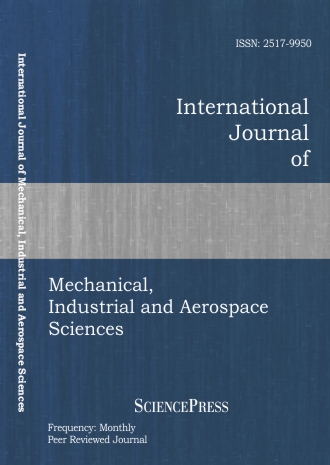
Scholarly
Volume:6, Issue: 9, 2012 Page No: 1841 - 1844
International Journal of Mechanical, Industrial and Aerospace Sciences
ISSN: 2517-9950
3463 Downloads
Investigation of the Aerodynamic Characters of Ducted Fan System
This paper investigates the aerodynamic characters of a model ducted fan system, analyses the basic principle of the effect of thrust promotion and torque reduction, discovers the relationship between the revolutions per minute(RPM) of the fan and the characters of thrust, as well as system torque. Firstly a model ducted fan has been designed and manufactured according to the specific structure of flow field, then CFD simulation has been carried out to analyze such aerodynamics, finally bench tests have been used to validate the simulation results and system configuration.
Authors:
References:
[1] Peiqing L. The Theory and Application of Aircrew (M). Beijing Univ. of Aeronautic and Astronautic Press, 2006. (in Chinese)